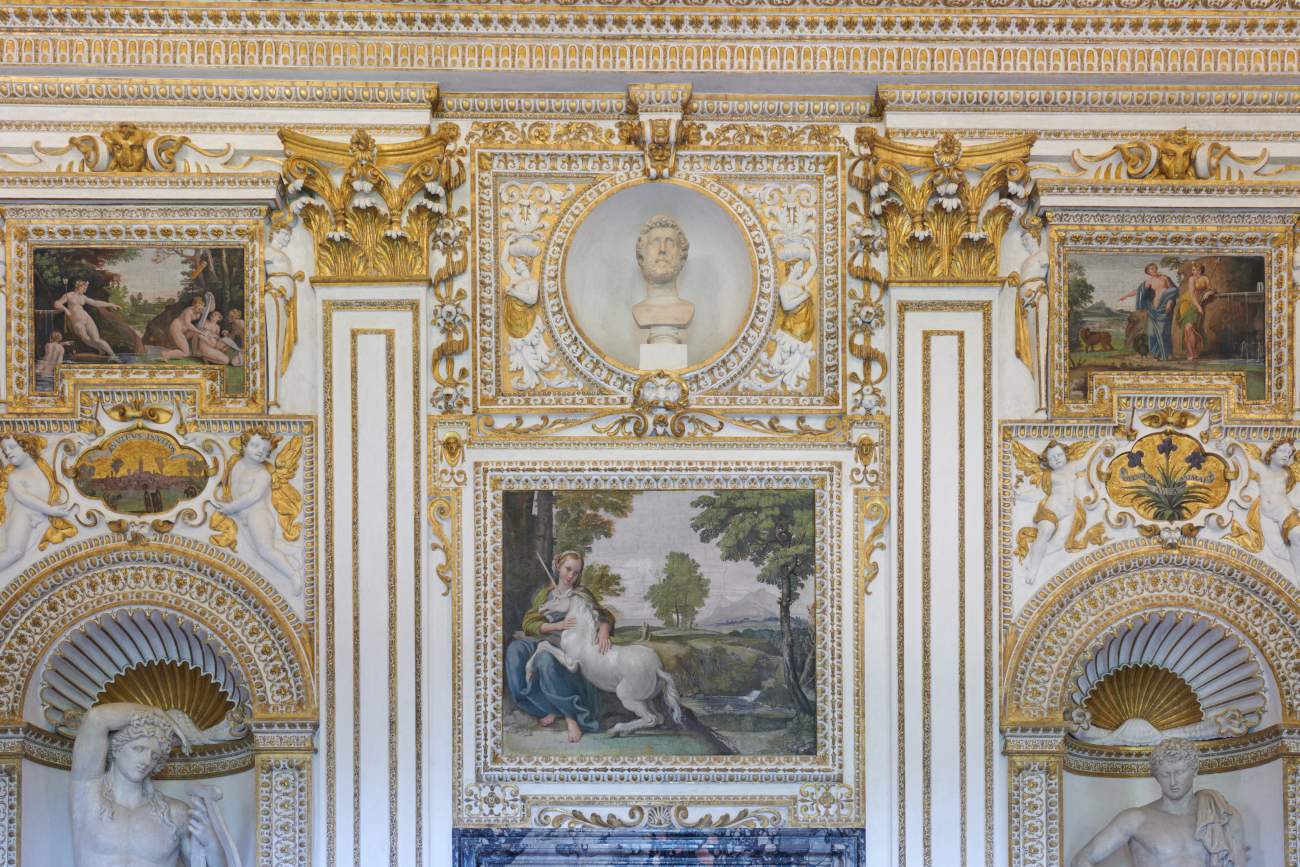From June 21 to November 3, 2024, Isola Bisentina, in Lake Bolsena, will welcome the public for the third year with a new tour route. After a major non-invasive restoration, commissioned by the Rovati family, owners of the island since 2017, and in agreement with the Superintendence, the large church of Saints James and Christopher is thus accessible again. Originally built and dedicated to St. John the Baptist by Ranuccio Farnese the Elder, who wanted a mausoleum for his family on the island, it was Cardinal Alessandro Farnese the Younger who built over this pre-existing building the imposing monument visible today: the church of Saints James and Christopher, whose construction began in 1588 based on a design by Giovanni Antonio Garzoni da Viggiù, and finished in the time of Odoardo Farnese between 1602-1603. It was Odoardo himself who commissioned Annibale Carracci to paint the canvases of the altars, which were looted over time. The only existing tombstone is that of Ranuccio, which has also been restored to restore its proper reading. Other members of the family are also buried in the church, including the young cardinal Ranuccio Farnese, brother of Alessandro, Pierluigi Farnese and Gerolama Orsini. Of Giulia Farnese there is no certainty: the noblewoman, in her will still preserved at the State Archives in Naples, expressed her wish to be buried on the island.
Inside the church is the exhibition La dama dell’Unicorno. Giulia Farnese and the Bisentina Island with images by Manfredi Gioacchini. The exhibition, in the year of the 500th anniversary of Giulia Farnese’s death, aims to tell the story of Giulia Farnese’s life through images of the places she frequented and historical documents. The images illustrate, from Capodimonte to Rome, the places that were the scene of the life and events of the very young bride of Orsino Orsini, mistress of Rodrigo Borgia and sister of the future pope, Paul III.
“This exhibition is the result of a search that began in order to find Giulia, but then turned into a real hunt for the unicorn, as if this mythological animal had been chosen by her to tell the story of herself, at a time when her beauty became too uncomfortable to continue to be celebrated by the great painters of the time,” says Sofia Elena Rovati, director of the Bisentina Island Project and curator of the exhibition. “After having favored through her relationship with the pope the rise to power of her brother Alessandro, Giulia Farnese suffered a damnatio memoriae for which the most beautiful woman of the Renaissance, who during her years as Sponsa Christi as a favorite of the pope met and perhaps posed for many of the painters who passed through the court of Alexander VI, today has no face. Hence the desire to want to get to know her and tell her story through the places most familiar to her and which we still have the great fortune to admire today. From Carbognano to Vasanello, from Castel Sant’Angelo to Palazzo Farnese, all the way to Ischia di Castro and Isola Bisentina itself, where Giulia wished to be buried, the unicorn - the Farnese emblem - comes alive and comes to life, accompanying us on a journey of discovery of her lady. Sometimes he is portrayed sleeping in the lap of a young woman, as in Domenichino’s fresco in the Palazzo Farnese in Rome; others in decidedly bolder attitudes, as in the cycle of frescoes in the Castello di Carbognano; depending on where we are, the unicorn tells us a different version of Giulia’s life, making her a complex, intriguing but contemporary character. I dare say, a feminist ante litteram.”
This year’s tour also includes the octagonal St. Catherine’s Chapel designed by Antonio da Sangallo the Younger and set on a 22-meter-high rock spur, and the Chapel of the Crucifix or Mount Calvary, which houses a crucifix attributed to Benozzo Gozzoli. For the first time it is also possible to admire the foundation stone of the church, inside the same building.
Then, among the island’s woods, it is possible to admire Federico Gori’s site-specific work, Il Vello d’Oro (The Golden Fleece): a resin dome covered with gold leaf integrated with the oldest holm oak tree, to insulate it from humidity. The work initiated a project of commissioning contemporary artists in dialogue with the ancient monuments on the island.
As a historical-educational experience aimed at all ages, Isola Bisentina invites visitors, as in a treasure hunt, to search for the effigy of the unicorn on the facades of the ancient palaces of the Farnese villages of Tuscia. On the island, visitors will find a QR code that will direct them to the first of the villages bordering the lake, where they will discover the Farnese palace bearing the high relief of the mythological animal. When the destination is reached, a second QR code will lead to the next destination, in a sequence that witnesses the different representations of Giulia Farnese’s favorite creature.
For info: www.isolabisentina.org
Image: Domenichino, The Maiden and the Unicorn (c. 1620; fresco; Rome, Palazzo Farnese)
 |
| On the Bisentina Island an exhibition dedicated to Giulia Farnese, on the 500th anniversary of her death |
Warning: the translation into English of the original Italian article was created using automatic tools. We undertake to review all articles, but we do not guarantee the total absence of inaccuracies in the translation due to the program. You can find the original by clicking on the ITA button. If you find any mistake,please contact us.